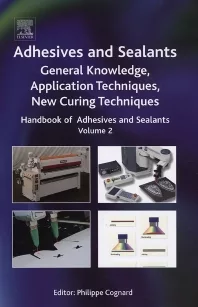Ask Dr. Dave: Could you please give us an overview of polyurethane adhesives?
Dave Dunn's February 2014 column.
Question: We are considering polyurethane adhesives as alternatives to the epoxy- and solvent-based adhesives we currently use. Could you please give us an overview of this type of adhesive?
Answer: It’s important to understand that the term polyurethane covers a wide range of systems. Polyurethane adhesives can be non-reactive or reactive types. Non-reactive types are either solvent solutions or aqueous dispersions. Reactive types can be single-component systems that are cured by moisture or heat, or two-component systems comprising a polyol and an isocyanate. Polyurethane adhesives are inherently quite flexible without added tougheners. Even the crosslinked polymers behave somewhat like thermoplastic elastomers with two distinct phases: the hard phase contributed by the isocyanate, and the soft phase from the polyol.
In recent years, considerable advancements have been made in both one- and two-component polyurethanes. Polyurethanes lack the extreme high performance of highly crosslinked epoxies and the instant curing of the toughened cyanoacrylates, but they are extremely versatile systems that can be formulated from hard to very flexible systems to form tough bonds with high peel strength.
In many large-area bonding situations, polyurethanes compete with reactive acrylic adhesives. Good examples of successful applications of polyurethanes include the bonding of automotive windshields and the assembly of fiberglass auto body panels. Polyurethanes have also replaced polychloroprene contact cements in many applications, such as shoe manufacturing.
Another variation of polyurethanes is reactive hot-melt urethanes (RHMUs), which are two-stage, thermoset adhesives that are applied as molten liquids and subsequently crosslink after application through a reaction with atmospheric moisture. These thermoset adhesives succeed in many industrial applications due to their ability to bond to many substrates, good high temperature resistance (compared to conventional thermoplastic hot melts), good cold flexibility, excellent water and vapor resistance, and good solvent resistance. I would certainly recommend that you test these adhesives for your applications, particularly if extra bond toughness would be a benefit. •
Looking for a reprint of this article?
From high-res PDFs to custom plaques, order your copy today!




